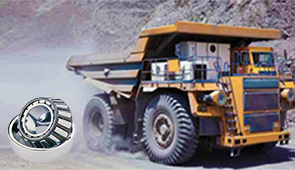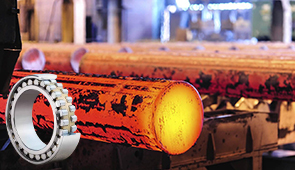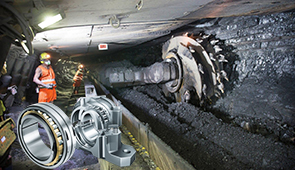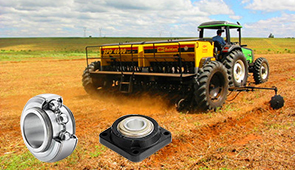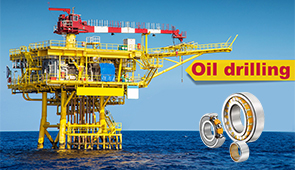How Oil and Grease Effectively Reduce Friction: The Best Lubricants Explained
Lubricants play a critical role in reducing friction, wear, and heat in mechanical systems, ensuring smooth operation and prolonging the lifespan of machinery components. This article examines the mechanics behind how oil and grease work as lubricants, explaining their chemical compositions and unique properties that make them essential in various industrial, automotive, and household applications. By exploring the science behind these substances, we will help readers understand their practical significance and guide them in selecting the most appropriate types of lubricants for specific uses. From the molecular interactions that minimize surface contact to the classifications and applications of different lubricant types, this framework lays the foundation for a comprehensive understanding of how oil and grease impact mechanical systems effectively.
What is the role of grease in reducing friction?
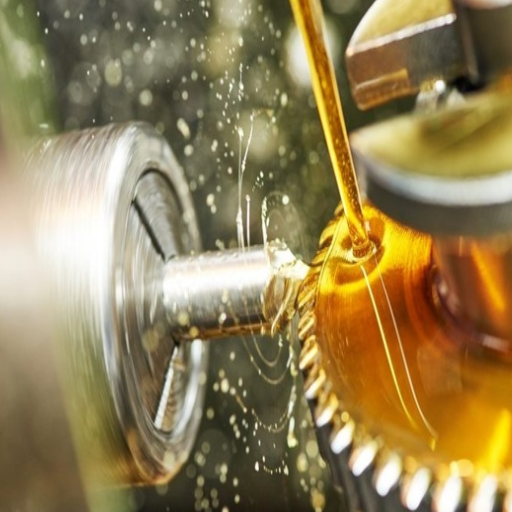
How does grease act as a lubricant?
Grease’s primary function is that of a lubricant, accomplished with the help of a grease film that reduces wear by controlling direct contact between two or more surfaces. Its composition includes a base oil, sticky material, and certain performance-defining modifiers. The base oil has lubrication capabilities, whereas the sticky material allows grease to maintain cohesion in a semi-solid consistency, which permits it to endure a variety of mechanical stresses. The following are some of the important technical characteristics:
- Viscosity: The base oil’s flow and its potential to retain a lubricating film.
- Drop point: The range in temperature in which grease can operate without significant change to its semi-solid consistency.
- Load-carrying capacity: The ability of grease to endure filtrate pressure and heat without significant degradation.
- Temperature range: Establishes the limits that can be utilized while ensuring competent lubrication.
- NLGI grade: The measurement of thickness indicating the appropriateness of grease for various applications.
If grease satisfies these factors, the lubrication is effective and dependable in operations requiring high load low-speed motion, and in sealed conditions where oil is not as effective.
What are the properties of grease that help decrease friction?
Grease decreases friction primarily through its viscosity, film strength, and additives designed to enhance performance under specific conditions. These properties work in conjunction to reduce metal-to-metal contact and ensure smoother operation.
- Base oil Viscosity: The base oil’s viscosity defines the layer’s thickness between surfaces, which greatly influences the grease’s effectiveness in reducing friction.
- Additives: Anti-wear and extreme pressure (EP) additives enable the grease to be more capable of dealing with high loads without excessive wear or destruction being experienced.
- Film Strength: Ensures that a continuous protective barrier is provided beneath varying pressures and temperatures.
- Consistency (NLGI grade): Determines the ability of the grease to retain its position in machine parts or bearings for effective lubrication.
These factors together achieve optimum limits of friction and wear especially when there is high pressure, very high or low temperatures, or long running times.
In which situations is grease the best lubricant for reducing friction?
Grease is an exceptional lubricant, particularly in situations where long-term bonding and functioning under severe conditions is required while being shielded from unusually harsh surroundings. For instance, the grease performs exceptionally well in extremely high and additional usage loads, as well as in water, dust, or even chemicals due to its thicker consistency relative to oil.
- NLGI Grade: For vertical and overhead applications, higher grades (for example NLGI 2) ensure that the grease will not move when placed in an undesirable position.
- Dropping Point: Allows for smooth lubrication during movement without breakage under beating higher temperatures.
- Water wash-out resistance: Helps sustain the lubricant under dangerously high wet or humidity conditions.
- EP Additives: In high load conditions, it diminishes wear surface contact between parts.
These aspects make grease an excellent performer for extreme and harsh conditions where enduring lubrication is required and practical in many applications.
How does oil compare to grease in reducing friction?
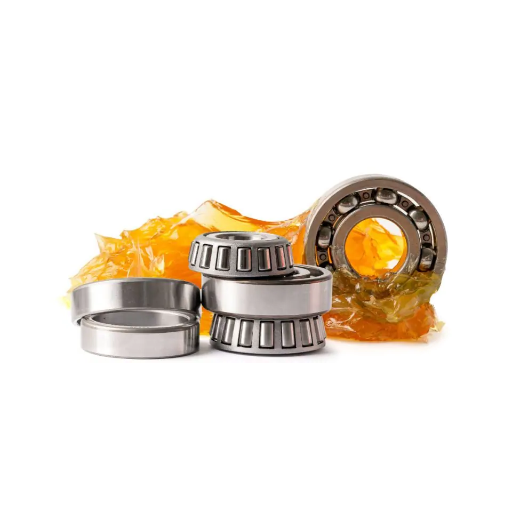
What are the advantages of using oil to reduce friction?
The oil lubricates in a way that eliminates friction because it can flex and flow through different facets. Its top benefits are:
- Coolant Efficiency: Oil solves the problem of friction as it can circulate while solving heat management. This is especially vital within fast-moving components, and elevated temperatures, as seen in turbines and engines.
- Active Lubrication: Oil tends to have added characteristics making its use in high-speed and accuracy equipment effortless without risking significant wear and tear to the components.
- Application Flexibility: Special custom grades and formulations allow the oil to be adjusted to specific targets considering operating temperature, level of contamination, and load.
- Proprietary Oil Maintenance: Unlike grease which leaves residues that accumulate with time, systems utilizing oil lubrication are clearer and more efficient to maintain, particularly in closed systems with oil recirculation.
Oil can be engineered with specifically designed viscosity indices which makes it functional under certain pressure and temperature conditions providing fine control over viscosity. In summary, oil is useful in changing systems where heat, speed, or precision need to be regulated.
How does oil’s viscosity affect its ability to reduce friction?
As with any oil, its viscosity influences the trimming of oil friction in the operation of machinery because it determines the thickness of the lubricant film on the touching surfaces. Greater viscosity guarantees thicker lubricant film formation, Surface contact is minimized due to low wear and tear. On the other hand, insufficient lubricant film due to low viscosity leads to increased violent friction and damage to the surfaces in contact with each other.
- Viscosity Index (VI): the quantitative change in viscosity value of oils with temperature changes. In hydraulic systems, higher VI guarantees more reliable lubrication than lower VI for systems working under wider temperature differences.
- Shear Stability: The measurement of an oil’s ability to withstand the mechanical destruction of an emulsion while retaining sufficient viscosity to ensure reliable motion lubrication.
- Operating Temperature Range: The selection of oils is based on the correct value of c st at 40° and 100° that will provide optimum viscosity at certain temperatures.
- Lubrication Regime: The bearing lubrication type, be it hydrodynamic, boundary, or mixed is determined by the friction viscosity and load combination resulting in varying friction values.
Efficient hydrostatic friction reduction and improved equipment life span can be achieved only after carefully sifting through the required viscosity.
In which applications is oil used to reduce friction more effectively than grease?
Oil lubricates with more efficiency and less friction than grease in settings such as turbines, gearboxes, hydraulic systems, and high-speed spindles where heat accuracy, dissipation, and precision matter. The following technical features support the application of oil in contrast to grease:
- Thermal Conductivity: Oils are suitable for applications that require effective heat transfer due to their ability to overtake grease in heat retention.
- Viscosity Range: In contrast to grease, oil is relatively easier to obtain at different levels of viscosity which aids in matching the lubrication regime with other degree of conditions such as temperature, speed, and displacement.
- Flow Characteristics: Grease is much thicker than oil which alters its viscosity making it incompatible with high-speed machineries because it leads to wear or failure.
- Contamination Removal: Oils help in the cleansing of the environment by holding contaminants that are difficult to remove using traditional means through filtration systems which is very crucial in places where longevity and performance depend on cleanliness.
Addressing such factors helps in attaining efficiency about cleanliness, therefore, elevating performance and impacting the systems vessel.
What are the principles of tribology in friction reduction?
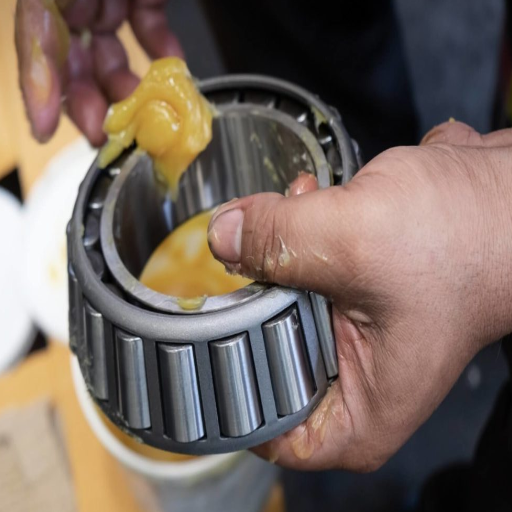
How do lubricants work to decrease friction between two surfaces?
Lubricants reduce friction between two surfaces in relative motion using a film that inhibits direct contact. This film greatly limits wear and heat produced during the motion, thus ensuring better functioning. From a mechanical point of view, the prime metrics that validate this phenomenon are:
- Viscosity: The ability of a lubricant to create a consistent film at varying temperature and pressure levels; this ensures separation of surfaces is achieved.
- Film Strength: The ability of a lubricant to withstand load without compromising its structure, thus blocking the contacting of material asperities.
- Additive Composition: Chemical substances that increase the performance abilities of lubricants under harsh conditions, such as antiwear or extreme pressure supplementary lubricants.
- Thermal Stability: The ability of a lubricant to withstand high temperatures without breaking down and losing its effectiveness in friction reduction.
- Boundary Lubrication Properties: Under high loads and low velocities, lubricants are required to perform in boundary lubrication regimes where the film thickness is very low.
Together, these metrics ensure that lubricants are effective in meeting the particular requirements of different machines, managing friction as well as taking care of the components’ durability.
What role does surface smoothness play in friction reduction?
Friction is affected by Surface smoothness joust because smoothness governs the contact mechanics between two surfaces. Smoother surfaces reduce asperities, or high points, coming into contact hence localized pressure and material deformation are reduced. This improves the standards of hydrodynamic or boundary lubrication and increases the effectiveness of wear.
- Surface Roughness: Surface roughness values increase and thereby improve friction coefficients in lubricated and dry conditions.
- Contact Area: Increased real contact area due to smoother surfaces reduces interfacial stress, improves load distribution, and reduces abrasions inflicted at the micro-scale.
- Film Thickness Ratio (λ): The λ value (film thickness to surface roughness) is optimized for hybrid lubrication regimes when smoother surfaces are used because the ratio (\lambda) increases.
All of these factors point out the fact that having smooth surface finishes increases the performance of the friction mechanisms incorporated into the system, hence prolonging the working life and saving energy in mechanical systems.
How do additives in lubricants enhance friction reduction?
Friction-lessening additives within lubricants work by changing the physical properties of the lubricant itself, as well as interacting with surfaces to reduce wear and energy loss. The addition of protective films, and increased load caring capacity, as well as chemical changes that deteriorate adhesion and abrasion, are some of the important key functions.
- Boundary Film Formation: Anti-wear agents such as Zinc Dialkyl Dithiophosphate (ZDDP) function by reducing asperity contact and surface damage on metal components. Therefore, these agents create a thin protective layer which leads to boundary film formation.
- Viscosity Index Improvement: Sulfur-phosphorus compounds that inhibit effective means and distraction EP moderation at high temperatures and pressure aid in preventing severe wear and other materials’ seizure on metals.
- Extreme Pressure Performance: The anti-friction agents alter energy on metal components which enable easier sliding at lower loads and heightening the level of endurance against mechanical compression.
- Surface Activation: Texas compounds held considerable promise as new sulfur phosphorus tended to alter surface slides while ensuring moderate concentration The COF, allows stronger performance while aiding in disguise.
These technical aspects verify how the friction-reducing additives incorporated within lubricants comprehensively deepen the process of lubrication and subsequently prolong the life of components that exist within a system.
Why is grease a popular choice for lubricating moving parts?
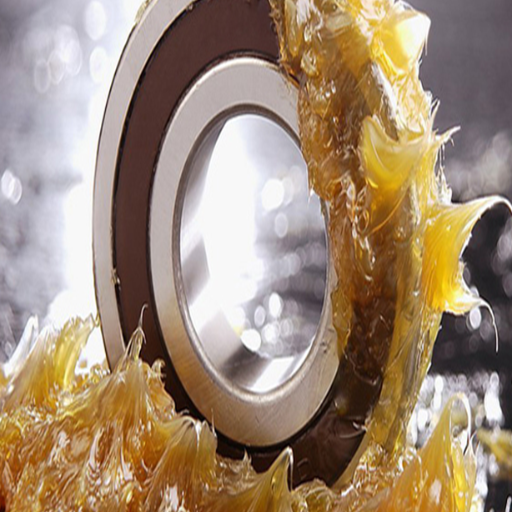
What are the benefits of using grease in mechanical systems?
The grease composition and consistency in mechanical systems offer several unique benefits. To start with, grease offers exceptional retention capabilities which guarantees that grease lubrication will withstand severe operational conditions such as vertical or horizontal loading. Additionally, Its semi-solid structure minimizes the need for frequent re-application, lowering maintenance intervals and costs. Lastly, grease is highly resistant to contamination and effectively seals out water, dirt,and other particulates which over time protects the moving parts from corrosion and wear.
- Grading (NLGI Grade): Indicates the flow properties and grade of the substance and its use in the application.
- Temperature Variation: Greases of high temperatures can maintain stability up to ~250°C, while low-temperature varieties work better under -20°C.
- Load Carrying (Weld Load): Frequently measured for high-pressure resistance by the tests matured Four-Ball EP.
- Resistance to Water Washout (% Loss): Necessary for use where there are high levels of moisture while under water spraying retention is crucial.
These factors help explain why grease is an exceptionally versatile substance critical for mechanical maintenance.
How does grease perform in high-temperature applications?
Grease performs exceptionally well in high-temperature applications when its formulation is specifically designed to withstand thermal stress without breaking down. I focus on selecting greases with a high dropping point and oxidative stability to ensure reliable performance.
- Dropping Point: This is defined as the temperature when a grease melts from its semi-solid state to a liquid. Greases designed for extreme conditions typically have a dropping point greater than 250 degrees centigrade.
- Oxidative Stability: High oxidation stability translates to effective resistance to breakdown at elevated temperatures which makes it possible to have oil in active high-temperature environments.
- Thickener Type: The most widely used complex soap-based thickener for high-temperature applications is lithium soap or calcium sulfonate because of their high stability under heat.
With these factors I set, I make sure that I maintain the reliability of the equipment and minimize possible failures in a high-temperature environment.
What types of thickeners are used in grease to enhance its lubricating properties?
While lubricating grease, the thickeners used to enhance its properties also serve a different purpose. Each type of thickener features some benefits which stem from its technical characteristics. While working with grease, I have come across the following thickeners most frequently:
- Lithium Complex: This type of thickener’s dropping point is usually above 260 ° C which is why these thickeners are very well suited for high temperature environments. Additionally, lithium complex thickeners are also well known for their exceptional water and mechanical resistance. Because of these features, lithium complex thickeners showcase great performance when used under demanding conditions.
- Calcium Sulfonate: In applications needing high levels of thermal stability, this thickener is invaluable due to its extreme EP properties, resistance to corrosion, and mechanical degradation. Calcium sulfonate is known to perform well in high endurance conditions while resisting degradation when under heavy load.
- Polyurea: In comparison to the previously discussed thickeners, polyuria thickeners do not require metallic soap which is beneficial for many applications. By improving the operational temperature range to a constant 180 ° C, polyuria, while maintaining high speeds in bearing, showcases excellent performance.
These thickeners are tailored to perform under specific requirements which is the reason that I can pick the one that ensures optimal lubrication and multi-equipment reliability.
How do different types of base oils affect friction reduction?

What are the characteristics of mineral-based oils in reducing friction?
The use of mineral-based oils is common due to their availability, reasonable costs, and adequate performance in reducing friction in a variety of operating conditions. In my view, their main trait of concern is the consistent viscosity index, which provides dependable lubrication film between surfaces. This diminishes the direct contact of metal surfaces which reduces wearing and extends the life of the equipment.
The reliability of mineral-based oils is represented by the following points:
- Viscosity Range: A broad area of applications is ensured because the typical kinematic viscosity ranges from 32 to 320 cSt at 40°C.
- Thermal Stability: Contains some oxide at a temperature of -10°C to 150°C, hence operating more effectively than some synthetic alternatives.
- Additive Compatibility: Mineral-based oils have a very good response to antiwear and extreme pressure additives, further improving their lubricating effectiveness in high-stress and load conditions.
- Hydrocarbon Composition: Customizability for specific friction-reduction needs is achieved as it primarily contains paraffinic, naphthenic, or aromatic hydrocarbons.
Overall, I rely on mineral-based oils when balancing performance, cost, and availability while considering their limitations in extreme temperatures or precision-demanding environments.
How do synthetic base oils compare in their ability to reduce friction?
Synthetic oils are drumhead outclass mineral oils about frictional properties due to their molecular structure, reduced friction, and thorough thermal oxidation. In contrast to the irregular hydrocarbon composition of mineral oils, synthetic options such as polyalphaolefins or esters, are designed for maximum efficiency and directly benefit fauts in friction.
- Low viscosity Oils: Kinematic Viscosity Stability – Synthetic oils oscillate from -40 degrees to over 200 degrees centigrade, these vacuum-increased thermodynamic properties ensure lubrication in extreme temperatures.
- Low Coefficient of friction: Synthetic oils are more efficient and wear less when compared to mineral oils, especially on precision tools or in high-speed environments.
- Thermal-Oxidative Resistance: The sturcture of specialized synthetic oils prevents ailment decay recovery at higher temperatures leading to better wear protection,
- Additive efficiency: The incorporation of lubrication classifies and directives friction power boundary denigrates wear enabling high durability Filtration.
Taking everything into account, mineral oils completely defeat synthetic oils in cost-effectiveness. Weaker membranes lead to tears in the substance’s proprietory surface risking fracture protection that makes synthetic oil difficult to preserve.
What factors should be considered when choosing a base oil for friction reduction?
- Viscosity and Viscosity Index (VI): A base oil must have an optimal viscosity that will allow adequate lubrication with minimal drag. A high VI is important to maintain proper performance throughout a given temperature range, particularly for severe heat or extreme cold applications.
- Thermal Stability: The oil should prevent thermal degradation at high operating temperatures as a breakdown in the structure will lead to increased wear and lowered efficiency.
- Pour Point: A low pour point ensures the oil remains in a fluid state at lower temperatures, which is critical for operations in cold climates or machines subjected to freezing temperatures.
- Compatibility with Additives: The base oil should be compatible with friction modifiers, anti-wear agents, and other additives that improve boundary lubrication and surface protection under high loads.
- Film Strength: A lubricant must have oil film strength that allows the oil to maintain a lubricating film under heavy loads to avoid metal-to-metal contact in high-pressure regions.
- Oxidation Resistance: The oil must have high oxidation resistance to ensure it does not degrade quickly, increase sludge and varnish formation, and lower the service life.
As it relates to the environment, some applications require that I assess the biodegradability and nontoxicity of the base oil without compromising its lubricating ability. In ensuring that the selected base oil corresponds with the operating conditions which include load, temperature, and speed, I confirm that the oil has been designed to meet the system’s particular friction reduction goals effectively and reliably.
Frequently Asked Questions (FAQs)
Q: How is oil used to reduce friction between surfaces?
A: Oil is used to create a thin, slippery film between moving parts, reducing direct contact between the two surfaces. This lubricating layer allows the surfaces to slide smoothly over each other, minimizing unwanted friction and wear. By filling in microscopic imperfections on the surfaces, oil helps to create a more uniform interface, further reducing friction.
Q: What are the differences between oil and grease in terms of lubricating behavior?
A: Unlike oil, which flows freely, grease is a semi-solid lubricant that stays in place better. Oil is ideal for applications where continuous lubrication is needed, while grease is better for intermittent use or where a lubricant needs to stay in one spot. Grease, being thicker, can provide a more robust barrier between surfaces, potentially offering lower friction in certain high-pressure applications.
Q: Can using certain lubricants increase friction in some cases?
A: Yes, in some situations, using the wrong lubricant can increase friction. For example, using a lubricant that’s too thick for the application can create drag and resistance. Additionally, if a lubricant becomes contaminated with particles or debris, it can act as an abrasive, leading to higher friction and wear. It’s crucial to use the appropriate lubricant as recommended by the manufacturer to avoid unnecessary friction and ensure optimal performance.
Q: What are lithium greases, and why are they widely used?
A: Lithium greases are a type of lubricating grease that uses lithium-based soap as a thickener. They are widely used due to their excellent stability, water resistance, and ability to perform well across a wide range of temperatures. Lithium greases are versatile and can be used in various applications, from automotive to industrial machinery. Their popularity stems from their ability to provide effective lubrication while resisting breakdown under challenging conditions.
Q: How do silicone-based lubricants differ from traditional oil-based ones?
A: Silicone-based lubricants, unlike oil-based ones, are not derived from petroleum. They offer several unique properties, including better temperature resistance, water repellency, and compatibility with a wider range of materials. Silicone lubricants are often used in applications where traditional oils might break down, such as in extreme temperatures or contact with certain plastics. However, they may not be as effective as oil-based lubricants for heavy-duty metal-on-metal applications.
Q: What role does research play in formulating new lubricants?
A: Research is crucial in the development of new and improved lubricants. Scientists and engineers constantly work to formulate lubricants that can withstand higher pressures, extreme temperatures, and harsher environments. Research also focuses on creating more environmentally friendly options and lubricants that can lead to energy savings. Through extensive testing and analysis, researchers aim to develop lubricants that can enhance performance, extend equipment life, and reduce maintenance needs across various industries.
Q: How do lubricants specifically help in reducing friction in a cart’s wheels?
A: Lubricants help reduce friction in a cart’s wheels by creating a slippery barrier between the moving metal parts of the wheel assembly, such as the axle and bearings. This allows the wheels to rotate more smoothly, reducing the energy required to move the cart. Proper lubrication of cartwheels can lead to easier maneuverability, less wear on the components, and potentially significant energy savings, especially in industrial settings where carts are used frequently.
Q: What are some considerations when choosing lubricants for marine applications?
A: When selecting lubricants for marine applications, several factors must be considered. The lubricant must be water-resistant and able to withstand saltwater corrosion. It should also maintain its lubricating properties under high pressures and varying temperatures. Biodegradability is often a concern for marine lubricants to minimize environmental impact. Additionally, the lubricant should be compatible with the specific materials used in marine equipment and adhere well to surfaces even in wet conditions.
UCTH213-40J-300 with Setscrew(inch)
CNSORDERNO: Normal-duty(2)
TOGN: UCTH213-40J-300
SDI: B-R1/8
SD: 2 1/2
UCTH212-39J-300 with Setscrew(inch)
CNSORDERNO: Normal-duty(2)
TOGN: UCTH212-39J-300
SDI: B-R1/8
SD: 2 7/16
UCTH212-38J-300 with Setscrew(inch)
CNSORDERNO: Normal-duty(2)
TOGN: UCTH212-38J-300
SDI: B-R1/8
SD: 2 3/8
UCTH212-36J-300 with Setscrew(inch)
CNSORDERNO: Normal-duty(2)
TOGN: UCTH212-36J-300
SDI: B-R1/8
SD: 2 1/4
UCTH211-35J-300 with Setscrew(inch)
CNSORDERNO: Normal-duty(2)
TOGN: UCTH211-35J-300
SDI: B-R1/8
SD: 2 3/16
UCTH211-34J-300 with Setscrew(inch)
CNSORDERNO: Normal-duty(2)
TOGN: UCTH211-34J-300
SDI: B-R1/8
SD: 2 1/8









